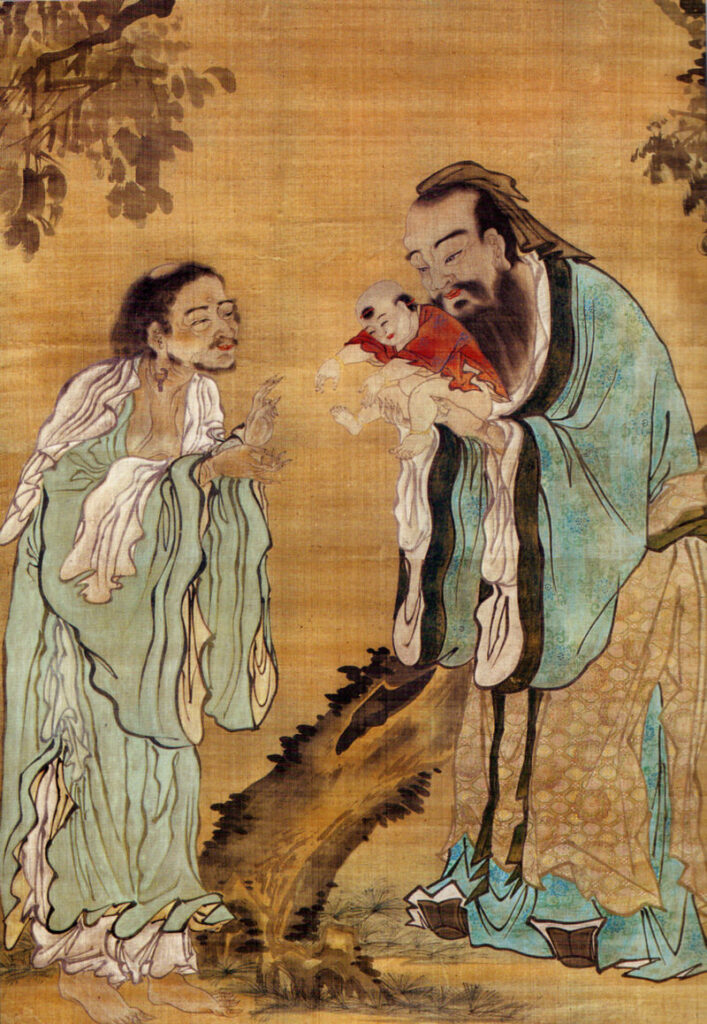
Imagine that we’re in a room full of ancient sages, the founders and masters of all the spiritual traditions and the lineages associated with them. Imagine further that we have only a limited amount of time to be with them. In that situation, instead of wasting time trying to figure out who is “correct,” my question to myself would be “how can I listen to them in such a way that I hear their message as they wished to convey it”? I’d want to suspend my own position—at least for the time being—to understand them. So, to help serve this purpose, I started using the phrase, “There’s a way in which.”
When a tradition says; “This is what is,” I allow myself to see the way in which it is true, without having to decide it is the only truth. This simple understanding opened up everything for me concerning the verb “to be.” With it, I can hear the person, and the tradition, speak what they want to say. I get the value of each speaker’s truth because they are experts in what it’s like to proceed from that assumption, and there’s much that I can learn from each perspective. Each perspective was or is a living spiritual tradition, so there is a way in which it is a reality in the sense of being the lived experience of another person, as well as a sustainable truth for a whole mass of humanity.

I strive to take this approach with each view presented by these various traditions, and this way of holding things produces in me a unique perspective in itself. It may appear to be naïve, but there is more here than meets the eye.
Letting Perspectives Have You
Part of the Tapestry approach is to allow yourself to take in different perspectives without having to believe that any particular point of view is THE teaching that explains everything.
I think we will always have preferences that we are more comfortable with—that’s natural. The question is how to (at least temporarily) set that preference aside and take in a new perspective while still holding our own truth. Can we allow ourselves to give ourselves the benefits, contributions, and gifts that these other ways of seeing may have for us?

A great many contradictory teachings are available today. How do you make good use of all these pieces of genius when so many seem to beg us to take sides? Unless we are willing to take the perspective of a particular teaching from its own side, then we are not in a position to understand what it is trying to convey to us whenever it says anything.
From the outside of a particular teaching, we only end up agreeing or disagreeing—that is to say, we are either “for” or “against” the statements or tenets of that teaching. In the Tapestry approach, this debate becomes beside the point because we want the flexibility of allowing in the benefits of more than one view.
While each node of the Tapestry Mandala can be the basis of a path in itself, each node also contributes to our capacity to live creatively in the other nodes as well. I hope that, by the end of this book, you will have a deeper sense of how each node of your life contributes to the others so that you can embrace any part of your life in a way that nurtures the rest of yourself as well. The Tapestry Mandala will help you orient on your quest. In it, there are three nodes of identity and three corresponding nodes of relationship. It is a simple picture of inclusive non-duality.
For an overview of the Mandala itself ( and how the different color nodes relate ) go here and and scroll down to “The Tapestry Mandala”: https://www.tapestryofbeing.org/the-tapestry-of-being-mandala/
Further blog entries will go into greater detail about each individual node of the Mandala.

(From The Tapestry of Being Introduction)
